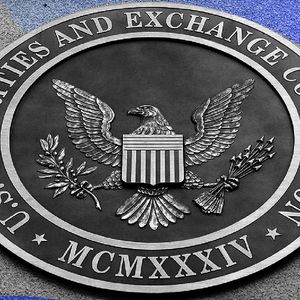Why FDIG Will Continue To Lag Behind Crypto And Single Stock Picks
6 min read
Summary Fidelity Crypto Industry and Digital Payments ETF remains inefficient, underperforming both its main holdings and direct investments in BTC, due to structural index constraints. The FDIG fund’s design caps upside by limiting exposure to outperforming stocks like Coinbase, forcing rebalancing into weaker holdings. I don’t see a role for FDIG for people wanting broad crypto exposure – this is not a space where such strategy can generate good returns. Especially not with FDIG. I maintain a Hold rating for existing investors, but do not recommend new entries; better risk/reward exists elsewhere in the crypto space. Roughly one year ago, I covered the Fidelity Crypto Industry and Digital Payments ETF ( FDIG ), arguing how it is the “best among the worst” crypto proxies ETFs. At the time I recommended a Hold, as I saw little value in holding this fund over a selection of cryptocurrencies and/or crypto companies. So far, I was proven right. The FDIG ETF lagged behind most crypto and proxies. It lagged behind MicroStrategy Incorporated ( MSTR ), which back then I called out as a more interesting leveraged crypto bet, as well as Coinbase Global, Inc ( COIN ), its main holding. FDIG, past 1 year performance (Seeking Alpha) FDIG only performed better than the broader market (represented by a S&P 500 ETF (SPY) in the chart), but it lagged behind a simple exposure to Bitcoin ( BTC-USD ). Today, I revise FDIG to assess whether its relative underperformance is set to continue or there can be a case to invest in this fund to gain broad exposure to the cryptocurrency sector. FDIG: quick ETF profile In my previous coverage of FDIG, I analyzed this ETF and outlined why I believe it is not an efficient ETF. I am not going to repeat the whole analysis (which readers can find there ). I will, however, report again the logic the index underlying FDIG follows to select its holdings, as it is relevant for my updated analysis: It selects Crypto Industry stocks that derive at least 50% of their revenue from cryptocurrency and related blockchain technology activities. These companies will collectively make up at least 60% of the index’s weight. It then selects the top 20 Digital Payments stocks, which must also derive at least 50% of their revenue from digital payments processing activities, based on average daily trading volume. Stocks are weighted according to their daily trading volume, adhering to diversification rules, and capped at the lesser of 22.5% of the index weight or the maximum weight that can support a $20M flow. When it comes to its expense ratio, FDIG charges a 0.40% yearly fee , which is 0.01% higher than what the fund charged one year ago, at the time of my last coverage. Compensating this increase in fees is a marginal improvement in FDIG’s Bid/Ask Spread , which went down from 0.88% one year ago to a lower, but still hefty, 0.78% today. Overall, FDIG remains an inefficient fund, in my view. The reason why I still cannot recommend it, however, goes well beyond its fees and liquidity metrics. It has to do with the way its underlying index is designed – something I will cover next. To understand the problem with FDIG, look at its top holdings FDIG’s top holdings are roughly unchanged since the time of my last coverage. Coinbase is the largest position held by the fund, followed by MARA Holdings, Inc ( MARA ) and other Bitcoin miners. FDIG Top hildings, August 2024 (Seeking Alpha) FDIG Top hildings, July 2025 (Seeking Alpha) The main difference regards concentration. While FDIG was already fairly concentrated one year ago, with its top 10 holdings representing more than half the fund, it is even more concentrated today. Its top 10 holdings represent more than 70% of the fund. This is not because of a strategic choice (or change in strategy) of the fund. Rather, it is a function of the overperformance of its main holding, Coinbase. Indeed, the number one holding of FDIG at the time of writing is the Fidelity Securities Lending Cash Central Fund – which is effectively a cash equivalent. That position in itself, at almost 24% of the fund, explains why the ETF’s concentration went up so significantly in just one year. I think the reason the fund is holding so much cash is because it has to rebalance itself after Coinbase’s overperformance of the past few months. While FDIG is not equally weighted per se, it has a cap for each stock, which can be at most 22.5% of the index weight or the maximum weight that can support a $20 Million flow. Additionally, “Digital Payments Stocks,” the category where Coinbase falls, can only weigh a total of 40% of the index. Given Coinbase performed so well in the last year, FDIG is now forced by design to reinvest its returns into different stocks. This is also the main weakness of FDIG, in my opinion: by limiting the run of its winners by design, the fund ends up being exposed to less performing companies . This is why I think the fund will keep underperforming relative to single stock picks in the crypto space. This is not a space that can be won with broad exposure and strategies that limit potential upside. On the contrary, I think the correct way to play the crypto space is by picking single potential winners. Obviously this is a strategy that comes with its own risk, and it is not for everyone. But it is preferable than owning a questionable selection of crypto stocks, in my view. Risks of investing (or not) in FDIG I do not see many scenarios where FDIG can overperform its main holdings. However, there could be a case for holding FDIG in case of a bullish run of Bitcoin miners. As the fund is now exposed significantly to miners, it could overperform Coinbase and Bitcoin if we were to see a sustained bull run in Bitcoin miners. Generally speaking, FDIG remains a highly volatile fund as it is exposed to highly volatile companies that often act as leveraged bet on the cryptocurrency space. I invite readers that believe a fund like FDIG can provide a “safer” way into cryptocurrencies to reconsider their position. I think this fund only limits the potential upside of investing in crypto, but does not offer a better risk profile or lower volatility. I think the crypto space is better avoided by most investors, while those willing to gain exposure should prefer a strategy of picking up selected stocks or cryptocurrencies. Conclusion During the last year, FDIG underperformed its main holding, Coinbase. Even simply holding Bitcoin via an ETF would have resulted in significantly better performance against this ETF. Readers may be tempted to think that entering now could be a good idea. However, a look “under the hood” of this ETF shows its underperformance is happening by design and is unlikely to stop, in my view. The problem is that the FDIG ETF caps the maximum weight of single stocks and sectors within the fund , providing limited upside for the few winners that its underlying index may select. I see the crypto space as a place where good returns can only be generated by selecting single stocks or cryptocurrencies. My final “ Hold ” rating for FDIG mostly reflects considerations of tax efficiency; if you have FDIG in your portfolio, it may be beneficial to hold it if you believe the current Bitcoin and crypto bull run has still upside in it. I would not recommend anyone to enter this fund to gain broad crypto exposure. This article is in no way an analysis of the current state of the cryptocurrency industry, nor a recommendation whether being exposed to crypto is a wise choice or not. Personally, I am a strong believer in Bitcoin, but I have almost no exposure to anything else in the crypto space.

Source: Seeking Alpha


